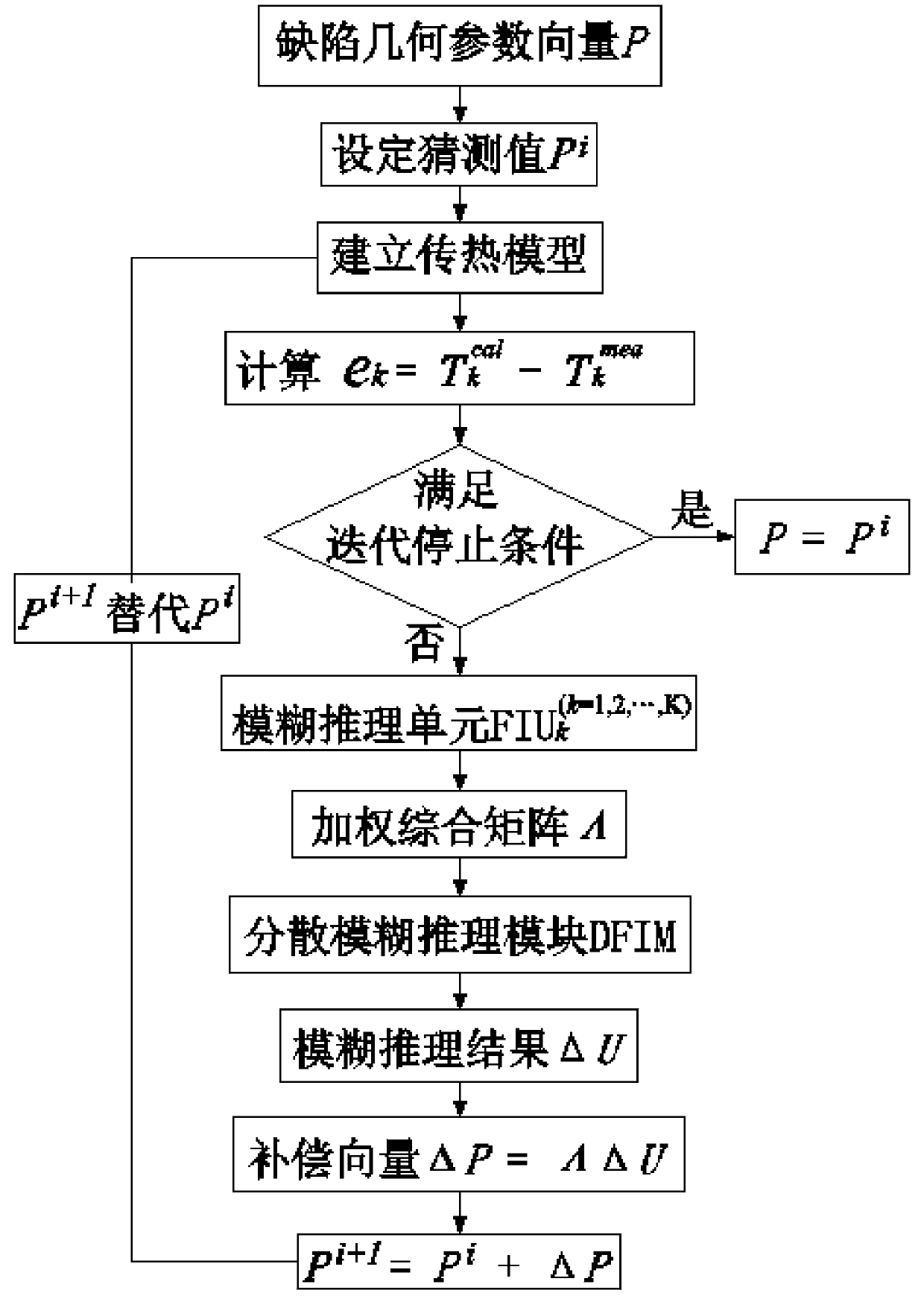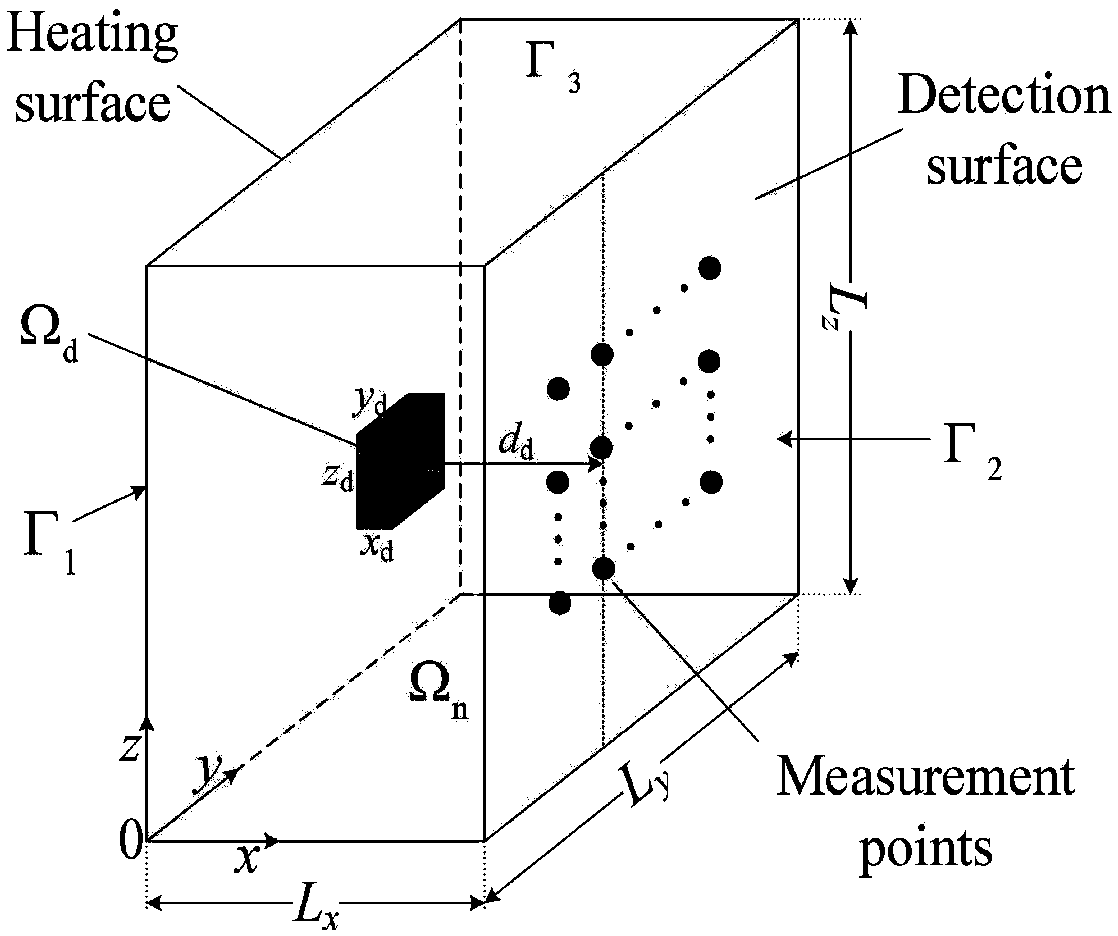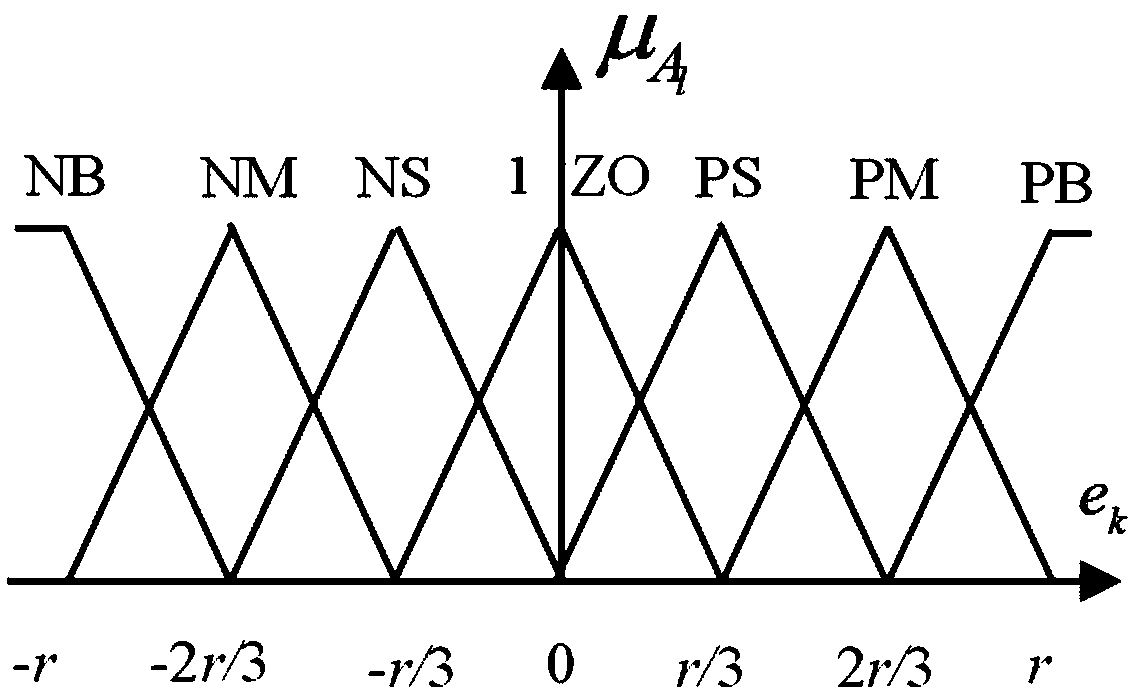Method for quantitatively detecting three-dimensional defects in device
A quantitative detection and defect technology, applied in the direction of material defect testing, etc., can solve the problems that affect the accuracy of quantitative verification and the low level of quantitative detection, and achieve the effect of improving anti-interference ability and high detection accuracy
- Summary
- Abstract
- Description
- Claims
- Application Information
AI Technical Summary
Problems solved by technology
Method used
Image
Examples
Embodiment Construction
[0024] The specific implementation manners of the present invention will be further described in detail below in conjunction with the accompanying drawings.
[0025] join Figure 1-5 , a method for quantitatively detecting three-dimensional defects inside a device in a specific embodiment, the length, width and height of the selected shape are respectively L x , L y , L z As the tested object, the test piece of the embodiment has a three-dimensional defect inside, and the detection includes the following steps:
[0026] 1) Select K temperature sampling points on the measurement surface of the test piece, and set the guess value P of the defect geometric parameter vector P i , where i is the number of iterations;
[0027] 2) According to the guessed value P of the defect geometric parameter vector P i , establish the heat transfer model of the test piece with internal defects; according to the heat transfer model, use the finite element method (FEM) to calculate the calcul...
PUM
| Property | Measurement | Unit |
|---|---|---|
| thermal conductivity | aaaaa | aaaaa |
| thermal conductivity | aaaaa | aaaaa |
| film coefficient | aaaaa | aaaaa |
Abstract
Description
Claims
Application Information
 Login to View More
Login to View More - R&D
- Intellectual Property
- Life Sciences
- Materials
- Tech Scout
- Unparalleled Data Quality
- Higher Quality Content
- 60% Fewer Hallucinations
Browse by: Latest US Patents, China's latest patents, Technical Efficacy Thesaurus, Application Domain, Technology Topic, Popular Technical Reports.
© 2025 PatSnap. All rights reserved.Legal|Privacy policy|Modern Slavery Act Transparency Statement|Sitemap|About US| Contact US: help@patsnap.com



